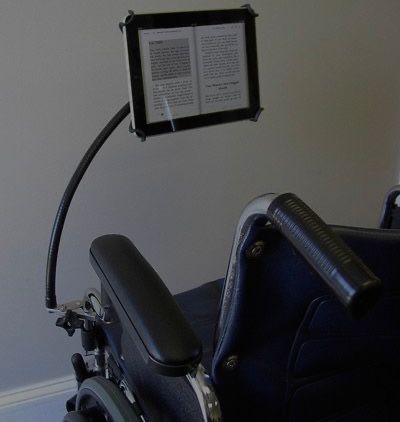By Goodness Eseme Ibangah Esq.
BACKGROUND
In 2022, The World Health Organization(WHO) stated that persons with disabilities
die up to 20 years earlier than those without disabilities considering that they are at
twice the risk of developing certain health conditions. A survey by the Nigeria
Demographic And Health Survey Program in 2018 showed an estimated 7% of
persons above the age of five (as well as 9%of those 60 or older) experience some
level of difficulty in at least one functional domain—seeing, hearing, communication,
cognition, walking, or self-care.
The situation of people with disabilities in Nigeria is horrifying because they
experience double vulnerability. They are marginalised and treated unfairly without
any regard for their human rights. In fact, their rights are largely disregarded from
birth when they are name-called, shamed, mocked and even abandoned by primary
caregiver (s). Terrible cases also abound of them being hunted, persecuted, and killed
on account of superstitious beliefs. Notwithstanding these gross human rights abuses
and violations, persons with disabilities continue to strive to exist in an environment
that ordinarily excludes them.
CHALLENGES
Indubitably, persons with disabilities in Nigeria face compounding multi-systemic
barriers and challenges ranging from:
1. Access to Education, Jobs, Health Care, Buildings and Transportation
Structural and systemic limitations and setbacks pose a huge barrier for persons with
disabilities in Nigeria, it is almost impossible for them to access basic services. They
are unable to get quality education due to low accessibility to schools with provisions
for their special needs, inadequate learning materials, lack of teachers/ tutors with
inclusive education training, and nonfunctional special needs schools.
In cases where these can be found, it is extremely expensive and reserved for the elite,
leaving people with disabilities with little or no valuable education. Also, it is rare to
see most people with disabilities in Nigeria owning inclusive digital design and tools.
In the healthcare sector, people with disabilities also have to deal with untrained
health workers, unfavourable facilities and low coverage insurance system. It is
normal to see people with disabilities on the streets begging and soliciting for support
to enable them to access basic healthcare. Most structures/facilities in Nigeria both
public and private are not disability friendly and makes it extremely difficult for
people with disabilities to access. These systemic and cultural barriers contribute to
the isolation of people with disabilities and by extension their non-participation in
different spheres of life. Unarguably, their ability to show up is first tied to their accessibility of these spaces.
II. Socio-Cultural, Political and Economic Discrimination/Stigma.
Disabled persons in Nigeria experience varying forms of discrimination, it is often
attributed to religious,cultural and traditional norms/beliefs. Even as minors, they are
seen as unclean, incomplete, and evil, subject of deliverance, cleansing and
purification. They are made to undergo rituals/rites with demeaning and dehumanising
process emboldened by silence of the victims. Overtime, these abhorrent
discriminatory practices have strengthened misconceptions about disability and
reinforced conscious and unconscious biases about people with disability.
III. Poor Political Will
Lack of political will by the Nigerian Government to adopt and implement laws that exclusively protect the rights of persons with disabilities remains an impediment to the full enjoyment of the rights of persons with disabilities. Inadvertently, affecting their quality of life, performance and meaningful contribution to the society. It was not until 2018, Following years of resilient effort by national and international human rights groups and bodies, the National Assembly passed into law “The Discrimination Against Persons with Disabilities (Prohibition) Act”. This act provides for the absolute integration of persons with disabilities into the society, the act also prohibits and penalises discrimination against them.
Additionally, the Act establishes a National Commission of People with Disabilities and charges the Commission with the responsibilities for their education, health care, social, economic and civil rights; and for related matters. Indeed, the passing of this Act is a step in the right direction.
However, only 9 of the 36 states in Nigeria have domesticated this law and even the celebrated states struggle with implementation. Proactive measures must be taken if Nigeria is to fulfill her obligation under the Convention on the Rights of Persons with Disabilities (CRPD).
RECOMMENDATION
While it is important for actors to sustain advocacy for the implementation of existing laws, deliberate innovative measures should be explored using technology and assistive technology (devices, software and equipment like mobility aids, walkers and wheelchairs) to solve some of the challenges persons with disabilities face in the society.
- Access To Technology Tools
Technology has proved to be a useful tool to promote social inclusion, global development and equality. The technology space is founded on innovations, that allow people to access skills, education, and employment. Through technology and assistive technology like screen leaders, braille displays, braille note takers, electronic magnifiers, optical character recognition software (OCR), screen readout software, text-to-speech software and alternative input devices persons with disabilities can be empowered to attain their full potential thereby activating their ABILITY to compete favorably in the mainstream society. It is also important that developers and designers understand assistive technologies and ensure the creation of apps, websites and platforms that are disability friendly. Hence, the need for institutions to adopt disability inclusive models/facilities, unique learning programs, safe ICT spaces, and investment into research on the intersecting areas of technology and disability.
Truly, technology as a leveller requires effort to create access for already marginalized groups, if not the digital divide will persistently widen and this will impact on existing inequalities. There is a need to close up these gaps by providing access to technology and technology tools, including relevant training to enhance proper usage. It is imperative that people with disability are part of the global digital transformation, so their potential and unique abilities are tapped into and they are not left behind. There must be deliberate promotion of accessibility and inclusivity in the technology space. An example is the lack of screen reader features on some mobile applications
and sites. On iPhone, the feature is called “VoiceOver”, a commendable addition but only a minority of people with disabilities in Nigeria have the means to acquire this brand. When digital tools and assistive technologies are accessible for education and empowerment of persons with disability, it becomes possible for them to contribute to national growth and advancement.
2. Digital Space Inclusion
It is crucial for people with disabilities to lead actions and champion interventions that affect them in the digital space. Programmes must reflect their contributions, lived experiences and realities, solutions must be with and for them. This way inclusion and ownership is built into the project design process. There is need for more work to be done in Nigeria to make digital spaces inclusive for people with disabilities, design tools including user interface design box ought to be improved. Digital transformation offers new opportunities for people with disabilities especially in developing countries. Online jobs can help people with disabilities to have a sense
of work and be empowered to contribute creatively to societal issues. E-commerce opens up great entrepreneurship possibilities for people with disabilities in Nigeria, they can access income and raise their financial status that would have been limited due to their disabilities.
Online learning platforms can help people with disabilities especially young people to learn new skills and gain insight on areas of interest, including obtaining certification from recognized local and global institutions to boost their portfolio, apply for jobs and explore opportunities.
3. Stakeholders Engagement
Technology constantly offers youths, women and children with disabilities new opportunities to explore their talents and potentials. There is a need for stakeholders to challenge existing stereotypes and spoken/unspoken biases that inherently set people with disabilities backward. Issues of accessibility and affordability of digital tools must be acknowledged and addressed, as well as the provision of adequate social protection measures and human rights violation reportage pathways to encourage both offline and online reporting.
CONCLUSION
The interplay between technology and law to advance the rights of people with disabilities is very promising. It is not enough to enact laws and policies to address the issues they face. Government and other stakeholders should embrace strategic collaboration to campaign and raise awareness on the dangers of non-inclusion of people with disabilities and the potential of technology to overcome existing setbacks they face. Importantly, investments must echo global standards for the protection and promotion of their rights. Finally, it is possible to maximize the benefits of technology and law to create a dynamic attitudinal shift in societal perception of DIS(ABILITY) from isolation to inclusion for the complete integration of people with disabilities into society.





